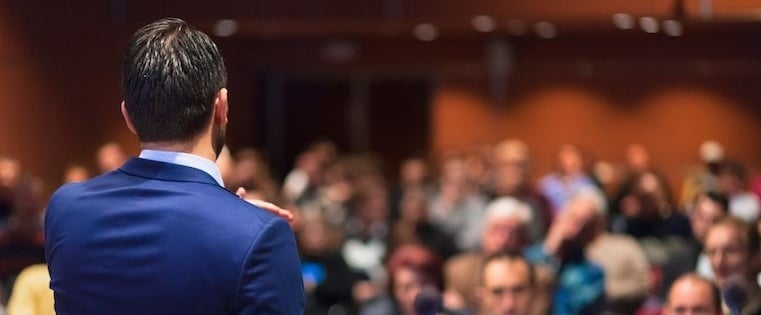Conversational presenting is a big trend in 2017. It signals a change in how audiences want to receive information and reveals a flashy slide deck isn’t enough to win over your prospects anymore.
Treating each meeting like a conversation allows you to navigate presentations based on your prospect’s needs.
It also ensures better communication, retention, and engagement before, during, and after you present.
Want to take conversational presenting a step further? A recent Harvard study found zoomable, canvas-type tools like Prezi are more effective, engaging, and persuasive than slideware or verbal-only presentations.
You need to set yourself and your business apart, and talking with your prospects instead of presenting at them is a great way to start.
How to Turn Presentations into Conversations
Whether you’re using a new presentation design tool or your trusty PowerPoint, it’s important to make your presentation memorable, personalized, and conversational. Where do you start?
Once you’ve created a custom presentation for your prospect, share it with your champion. She can tell you what you got right, and what needs improvement, before you present to the rest of her team.
When you’ve incorporated her feedback, share the finished presentation with all participants at least twenty-four hours before the meeting. Give them a day to review your slides and digest the information. This prevents them from doing so during your presentation -- which leads to less active listening and more awkward silence.
Start every presentation by asking "How best can we spend this time together?" While you and your primary contact should have already nailed down the primary goals for this meeting, it’s smart to open by checking that your expectations align with the room’s. If someone shares a different objective, be willing to alter the flow of your presentation or skip to relevant slides.
Finally, touch base throughout your presentation. Ask, "Is what we’re covering relevant?" or "Am I answering your questions?" This also works if things aren’t going well. Ask your audience, "I feel like this isn’t resonating. Is there something that will make this conversation more valuable for you and your business?"
By involving your prospect in the presentation, you’ve given them ownership in the meeting and empowered them to make an educated decision about your company.
3 Reasons to Try Conversational Presenting
Still not convinced you want to ditch your tried-and-true presentation style in favor of something less predictable? Here are three reasons to try turning your presentations into conversations.
1) They’re More Memorable
How many times have you sat through a presentation without remembering a thing the presenter said a day -- or even an hour -- later? We remember conversations because we’re exchanging dialogue and our brain activity actually begins to mirror the other person’s.
By using a fluid presentation style, you elicit the same type of neural response. This leaves your audience with a memorable impression of you and the information you shared.
2) They Make a More Persuasive Argument
In traditional presentations, each slide builds to your "money slides." You know the ones. They contain the stats that make everyone gasp or the case study from that big-name client. They’re impactful, so why would you bury them in your presentation?
Like any conversation, you want to win over your audience as quickly as possible. So lead with your best stuff.
Open your presentation with that stat or killer case study. Hook them with what’s most relevant to their business, and you’ll be able to make a more persuasive argument moving forward.
This is an easy, organized way to keep presentations tailored to your prospect’s needs in real time. Plus, it beats clicking through 18 superfluous slides to get to the one that answers their question.
3) It Gets to the Point Faster
If you only have 20 minutes with your prospect, don’t waste time on skimmable administrative slides. Get to the meat of your presentation immediately.
Conversational presenting allows you to get from Point A to Point Z faster. Skip slides that aren’t going to close the deal and spend time on the ones that will. With conversational presenting, you’ll also have more flexibility to change your approach mid-presentation.
Have you ever been in a meeting with a champion’s manager, only to discover they’re making a different business case for your product/service than your champion? The conversational approach allows you to switch focus quickly and save the sale.
The way we consume information is changing, so shouldn’t the way we present it? Build presentations that facilitate a conversation with your prospect, and see what it does for your business.



![12 Best Sales Presentations To Inspire Your Sales Deck [+ 5 Tips]](https://knowledge.hubspot.com/hubfs/sales-deck-1-20241016-748271.webp)




![How to Make a Business Presentation in 7 Easy Steps [Free Business Presentation Templates]](https://53.fs1.hubspotusercontent-na1.net/hubfs/53/how-to-make-a-business-presentation.jpg)


